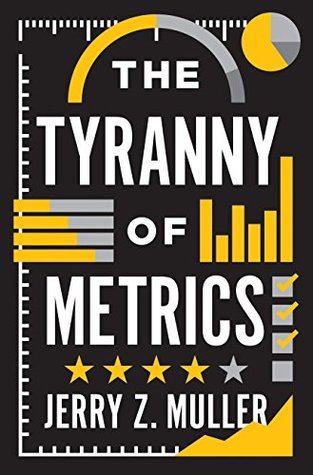More on this book
Community
Kindle Notes & Highlights
Not everything that
can be measured can be improved—at least, not by measurement.
Nowhere are metrics in greater vogue than in the field of medicine.
the United States was number
1 in terms of healthcare spending per capita
Perhaps the most popular trend in American health policy is the promotion of performance metrics, accountability, and transparency.
successful uses of metrics in medicine is the use of performance measures to reduce hospital-induced infections acquired from “central lines.”
The Cleveland Clinic, Geisinger, and the Keystone project are frequently cited as proof of the efficacy of measuring performance, and with reason.
The argument for accountability and transparency is based on the premise that the public release of metrics of success and failure will influence the behavior of patients, professionals, and organizations.
The populations upon which medical research is based differ from the real populations that doctors and hospitals treat.
Esto recuerdo haberlo mencionado en la clase pasada, para la realización de los estudios clínicos los pacientes son contactados al compartir ciertas características definidas por los investigadores. A menudo, la realidad dista mucho de lo que se analiza.
That might explain why simply following the recommended procedures does not necessarily lead to improved outcomes.
“case selection bias”
“Pay for performance” reduces intrinsic motivation.
of resources—
The use of metrics to reward performance, either through monetary or reputational rewards, is much more problematic.
counterinsurgency (COIN) campaigns, most recently in Iraq and Afghanistan.
Interpretation of indicators is critically important, and requires informed expert judgment.
interpretation is a qualitative activity
distorting the information system of the organization.
Performance indicators can certainly aid, but not replace, the key functions of management: thinking ahead, judging, and deciding.
And it is characteristic of our culture that we tend to assume that performance and transparency rise and fall together.
In interpersonal relations, even the most intimate ones, success depends on a degree of ambiguity and opacity,
This strategy entails negotiation, trading off some interests against others in an attempt to attain a compromise that will be tolerable to a number of interests, though rarely entirely satisfactory to any one of them.
Outputs include data that the government produces on social and economic trends, as well as the results of government actions, such as regulatory rules.
Inputs, by contrast, are the discussions that go into government decision-making: discussions between policymakers and civil servants.
Making internal deliberations open to public disclosure—that is, transparent—is counterproductive, Sunstein argues, since if government officials know that all of their ideas and positions may be made public, it inhibits openness, candor, and trust in communications.
Transparency is also a hazard in diplomacy, and is fatal to the gathering of intelligence.
The result is that the metric means comes to replace the organizational ends that those means ought to serve.
advancing short-term goals at the expense of long-range considerations.
Costs in employee time.
Diminishing utility.
Rule cascades.
Rewarding luck.
Discouraging risk-taking.
Discouraging innovation.
Discouraging cooperation and common purpose.
Degradation of work.
Costs to productivity.
The sort of measurements with which this book is concerned are performance metrics that quantify human achievement and failure.
What kind of information are you thinking of measuring?
How useful is the information?
How useful are more metrics?
What are the costs of not relying upon standardized measurement?
to whom will the information be made transparent?
What are the costs of acquiring the metrics?
Ask why the people at the top of the organization are demanding performance metrics.
How and by whom are the measures of performance developed?


